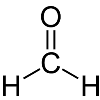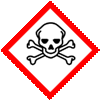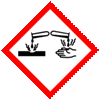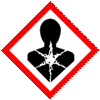Formaldehyde Solution or Formalin BP Ph Eur EP USP Grade Manufacturers, wih SDS GHS MSDS Sheet |
Supplier, Manufacturer, Exporter of Formaldehyde Solution or Formalin BP Ph Eur EP USP Grade, Muby Chemicals of Mubychem Group, established in 1976, is the original manufacturers of Specialty Chemicals, Pharmaceutical Excipient, Fragrance Food & Flavor chemicals, Reagent Grade Chemicals, Shale Gas Fracturing Chemicals in India. Mubychem Group has several manufacturing facilities spread across Western India and world wide contacts and toll manufacturers. We are exporting globally to countries like USA, Canada, Europe, UAE, South Africa, Tanzania, Kenya, Egypt, Nigeria, Cameroon, Uganda, Turkey, Mexico, Brazil, Chile, Argentina, Dubai, Korea, Vietnam, Thailand, Malaysia, Indonesia, Australia, China, Germany, France, Italy Portugal, Bangladesh, etc. The products are offered as per required specifications and in correct shape and size in mm or meshs or microns as specified by the buyer. The participating units have one or more accreditations like FDA - cGMP and GLP approval, ISO-9001 Certified, "REACH" Registered, ISO-14001, ISO/IEC 17025, ISO-22000, FSSC 22000, ISO 45001, Kosher Certified, Halal Certified, HACCP, FSSAI. We offer Commercial Pure & IP BP EP Ph Eur USP NF JP FCC Food Grade Analytical Reagent Grades of Chemicals |
| Bookmark this Web Site -- or -- Email This Page Info to a Colleague or Yourself |
Search our website here:







Formaldehyde: CAS Number: 50-00-0, EINECS EC Number: -, Molecular Formula: HCHO, Molecular Weight: 30.03, HS Code ---**
How big is your requirement or how small
We serve it all.
Specifications, Safety Data Sheet, Manufacturing process details, Wholesale retail buy sell prices, Uses etc available on line in these pages for Formaldehyde Solution or Formalin.
For SDS MSDS Sheet Click
SDS MSDS Sheet of Formaldehyde Solution Manufacturers
Spanish Fabricantes de soluciones de formaldehído
Portuguese solução de formaldeído fabricantes
Formaldehyde Solution
Pure BP Ph Eur EP USP Grade Suppliers

Formaldehyde is a naturally occurring organic compound with the formula CH2O (H-CHO). It is the simplest of the aldehydes (R-CHO) and is also known by its systematic name methanal. The common name of this substance comes from its similarity and relation to formic acid.
Formaldehyde Solution BP Ph Eur
Formalin
Formaldehyde Solution (35 per cent), Ph Eur
CH2O -- 30.03 -- CAS 50-00-0
Action and use: When suitably diluted, used in the treatment of warts.
DEFINITION
Content: 34.5 per cent m/m to 38.0 per cent m/m of formaldehyde (CH2O; Mr 30.03). It contains methanol as stabiliser.
CHARACTERS
Appearance: Clear, colourless liquid.
Solubility: Miscible with water and with ethanol (96 per cent). It may be cloudy after storage.
IDENTIFICATION
A. Dilute 1 ml of solution S (see Tests) to 10 ml with water. To 0.05 ml of the solution add 1 ml of a 15 g/l solution of chromotropic acid sodium salt, 2 ml of water and 8 ml of sulphuric acid. A violet-blue or violet-red colour develops within 5 min.
B. To 0.1 ml of solution S add 10 ml of water. Add 2 ml of a 10 g/l solution of phenylhydrazine hydrochloride, prepared immediately before use, 1 ml of potassium ferricyanide solution and 5 ml of hydrochloric acid. An intense red colour is formed.
C. Mix 0.5 ml with 2 ml of water and 2 ml of silver nitrate solution in a test-tube. Add dilute ammonia until slightly alkaline. Heat on a water-bath. A grey precipitate or a silver mirror is formed.
D. It complies with the limits of the assay.
TESTS
Solution S: Dilute 10 ml, filtered if necessary, to 50 ml with carbon dioxide-free water.
Appearance of solution: Solution S is colourless.
Acidity: To 10 ml of solution S add 1 ml of phenolphthalein solution. Not more than 0.4 ml of 0.1 M sodium hydroxide is required to change the colour of the indicator to red.
Methanol: To pass Gas chromatography. 9.0 per cent V/V to 15.0 per cent V/V.
Sulphated ash: Maximum 0.1 per cent, determined on 1.0 g.
ASSAY
Into a 100 ml volumetric flask containing 2.5 ml of water and 1 ml of dilute sodium hydroxide solution, introduce 1.000 g of the solution to be examined, shake and dilute to 100.0 ml with water. To 10.0 ml of the solution add 30.0 ml of 0.05 M iodine. Mix and add 10 ml of dilute sodium hydroxide solution. After 15 min, add 25 ml of dilute sulphuric acid and 2 ml of starch solution. Titrate with 0.1 M sodium thiosulphate.
1 ml of 0.05 M iodine is equivalent to 1.501 mg of CH2O.
Formaldehyde Solution USP
CH2O 30.03
Formaldehyde CAS 50-00-0
Formaldehyde Solution in bulk containers contains not less than 37.0 percent, by weight, of formaldehyde (CH2O), with methanol added to prevent polymerization. Formaldehyde Solution in small containers (4 liters or less) contains not less than 36.5 percent, by weight, of formaldehyde (CH2O), with methanol present to prevent polymerization.
Packaging and storage: Preserve in tight containers, and preferably store at a temperature not below 15C.
Labeling: The label of bulk containers of the Solution directs the drug repackager to demonstrate compliance with the USP Assay limit for formaldehyde of not less than 37.0%, by weight, immediately prior to repackaging.
Identification:
A: Dilute 2 mL with 10 mL of water in a test tube, and add 1 mL of silver-ammonia-nitrate: metallic silver is produced either in the form of a finely divided, gray precipitate, or as a bright, metallic mirror on the sides of the test tube.
B: Add 2 drops to 5 mL of sulfuric acid in which about 20 mg of salicylic acid has been dissolved, and warm the liquid very gently: a permanent, deep-red color appears.
Acidity: Measure 20.0 mL into a flask containing 20 mL of water, add 2 drops of bromothymol blue and titrate with 0.1 N sodium hydroxide: not more than 10.0 mL of 0.1 N sodium hydroxide is consumed.
Methanol: To pass the test: 9.0 per cent V/V to 15.0 per cent V/V.
Assay: Transfer about 3 mL of Solution to a tared flask containing 10 mL of water, insert the stopper in the flask tightly, and accurately determine the weight of the Solution taken. Slowly and quantitatively add a mixture of 50.0 mL of 1 N sodium hydroxide and 50 mL of hydrogen peroxide that has been previously neutralized to bromothymol blue with 1 N sodium hydroxide. Heat the contents of the flask cautiously on a steam bath for 15 minutes, shaking it occasionally with a rotary motion. Allow the mixture to cool, rinse the funnel and the inner wall of the flask with water, and after allowing it to stand for 30 minutes, add 2 to 5 drops of bromothymol blue and titrate the excess alkali with 1 N sulfuric acid. Perform a blank determination (see Residual Titrations under Titrimetry). Also make a correction based upon the acidity found in the test for Acidity. Each mL of 1 N sodium hydroxide is equivalent to 30.03 mg of CH2O.
We also Supply Formaldehyde Solution EP Grade.
For Original Monographs of IP Indian Pharmacopoeia BP British Pharmacopoeia USP US Pharmacopoeia FCC Food Grade product, please check with the respective web-pages or books.
We also manufacture and supply as under:
Ethyl Formate or Formic Acid Ethyl Ester
Manufacturers:
MUBY CHEMICALS
Ambernath Mumbai, Ankleshwar Gujarat, India
TEL: (OFFICE) +912223770100, +912223726950
Current Date Time in India GMT+5:30
e-mail: info@mubychem.com
USA, Canada, Mexico and other American neighbouring buyers may
e-mail: us@mubychem.com
Call toll-free 1-877-682-9243 (1-877-MUBYCHEM)

Copyright and Usual Disclaimer is Applicable.
Last 3 November, 2025




Exporters to USA Canada UAE Europe South Africa Tanzania Kenya Uganda Egypt Nigeria Turkey Mexico Brazil Argentina Chile Dubai etc.
Global or International Suppliers, Exporters, Importers, Manufacturers
I shall pass through this world, but once. If therefore, there is any good that I can do, or if there is any favor that I can show to a fellow human being, let me do it now. Let me not defer or neglect it. For I shall not tread this way again
Formaldehyde Solution (with Methanol) SDS Safety Data Sheet
MSDS Sheet, Material Safety Data Sheet 21-Oct-20
1. Product Identification
Product Name & Other Names: Formalin (with Methanol)
CAS No.: 50-00-0
EINECS EC Code: 200-001-8
Molecular Weight: 30.03.
Chemical Formula: HCHO.
Relevant uses and uses advised against (if any): Industrial Manufacturing.
Suppliers: As per letterhead.
2. Hazards Identification
GHS, Globally Harmonized System Classification in accordance with 29 CFR 1910
Classification according to Regulation (EC) No 1272/2008
Acute toxicity, Oral (Category 3), H301
Acute toxicity, Dermal (Category 3), H311
Acute toxicity, Inhalation (Category 3), H331
Skin corrosion (Category 1B), H314
Skin sensitization (Category 1), H317
Germ cell mutagenicity (Category 2), H341
Carcinogenicity (Category 1B), H350
Specific target organ toxicity - single exposure (Category 1), H370
Specific target organ toxicity - single exposure (Category 3), Respiratory system, H335
Labeling according to GHS USA & Regulation (EC) No 1272/2008
GHS Label Elements  Toxic | GHS Label Elements  Corrosive | GHS Label Elements  Health Hazard |
Signal Word: Danger
Hazard Statements:
H301+H311+H331 Toxic if swallowed, in contact with skin or if inhaled.
H314 Causes severe skin burns and eye damage.
H317 May cause an allergic skin reaction.
H335 May cause respiratory irritation.
H341 Suspected of causing genetic defects.
H350 May cause cancer.
H370 Causes damage to organs.
Precautionary Statements
P202: Do not handle until all safety precautions have been read and understood.
P260: Do not breathe dust/fume/gas/mist/vapors/spray.
P264: Wash ... thoroughly after handling.
P270: Do not eat, drink or smoke when using this product.
P271: Use only outdoors or in a well-ventilated area.
P272: Contaminated work clothing should not be allowed out of the workplace
P280: Wear protective gloves/protective clothing/eye protection/face protection.
P301+P310+330: IF SWALLOWED: Rinse mouth and immediately call a POISON CENTER or doctor/physician.
P302+P352: IF ON SKIN: Wash with soap and water.
P303+361+353: IF ON SKIN (or hair): Remove/Take off immediately all contaminated clothing. Rinse skin with water/shower.
P304+P340: IF INHALED: Remove victim to fresh air and keep at rest in a position comfortable for breathing.
P305+P351+P338: IF IN EYES: Rinse cautiously with water for several minutes. Remove contact lenses, if present and easy to do. Continue rinsing.
P308+313: IF exposed or concerned: Get medical advice/attention.
P314: Get Medical advice/attention if you feel unwell.
P360: Rinse immediately contaminated clothing and skin with plenty of water before removing clothes.
P363: Wash contaminated clothing before reuse.
P403+P233: Store in a well-ventilated place. Keep container tightly closed.
P405: Store locked up.
P501: Dispose of contents/container in accordance with local/regional/national/international regulations.
Classification according to EU Directives 67/548/EEC or 1999/45/EC:
Hazard Symbols:
T Toxic
Xi Irritant
C Corrosive
Risk Phrases:
R23/24/25 Toxic by inhalation, in contact with skin and if swallowed.
R35 Causes severe burns.
R37/38 Irritating to respiratory system and skin.
R41 Risk of serious damage to eyes.
R43 May cause sensitization by skin contact.
R45 May cause cancer.
R46 May cause inheritable genetic damage.
R68 Possible risk of irreversible effects.
3. Composition/Information on Ingredients
Ingredient I: Formaldehyde 30-45% in water.
CAS No.: 50-00-0
EINECS EC Code: 200-001-8
Ingredient II: Methanol 5-20% in water.
CAS No.: 67-56-1
EINECS EC Code: 200-659-6
4. First Aid Measures
Always seek medical attention after first aid measures are provided.
Inhalation: Remove the victim to fresh air. If not breathing, give artificial respiration. If breathing is difficult, give oxygen. Get medical attention.
Ingestion: Do NOT induce vomiting. Never give anything by mouth to an unconscious person. Rinse mouth with water. Contact medical center quickly. Never give anything by mouth to an unconscious person. Get medical attention.
Skin Contact: Immediately flush skin with plenty of water for at least 15 minutes. Remove contaminated clothing and shoes. Get medical attention. Wash clothing before reuse. Thoroughly clean shoes before reuse.
Eye Contact: Check for and remove any contact lenses. Immediately flush eyes with running water for at least 15 minutes, keeping eyelids open. Cold water may be used. Get medical attention.
5. Fire Fighting Measures
Fire: Flash point: Not available.
Auto ignition temperature: Not available.
Toxic fumes, carbon dioxide and carbon monoxide may be formed in fire.
Fire Extinguishing Media: Dry chemical, foam or carbon dioxide and water spray jet.
Special Information: In the event of a fire, wear full protective clothing and NIOSH-approved self-contained breathing apparatus with full face piece operated in the pressure demand or other positive pressure mode. Use water spray to cool unopened containers.
6. Accidental Release Measures
Personal precautions, protective equipment and emergency procedures: Avoid breathing dust/fumes/gas/mist/vapors/spray. Use individual protective equipment (waterproof boots, suitable protective clothing, safety glasses, etc). Restrict unprotected personnel from the area. Prevent any contact with hot surfaces. Do not approach facing the wind. Do not touch the spilled material.
Environmental precautions: Do not let the product enter drains, soil or water sources.
Methods and materials used for containment Cleanup procedures and Storage:
Small Spill: Wear respiratory protection. Avoid breathing vapors, mist or gas. Ensure adequate ventilation. Remove all sources of ignition. Evacuate personnel to safe areas. Beware of vapors accumulating to form explosive concentrations. Vapors can accumulate in low areas. Mop and pick up the material and place in an appropriate waste disposal container. Finish cleaning by spreading water on the contaminated surface and dispose of according to local and regional authority requirements.
Large Spill: Contain spilled material. Absorb with an inert, non-combustible absorbent material, (e.g. sand, earth, diatomaceous earth, vermiculite). Vacuum or sweep up and remove to an approved disposal container. Avoid mist formation. Keep away from heat. Keep away from sources of ignition. Provide ventilation. Contact Environment Agency.
7. Handling and Storage
Precautions for safe handling: Apply according to good manufacturing and industrial hygiene practices. Ensure proper ventilation. Wash thoroughly after handling. Do not drink, eat or smoke while handling. Avoid contact with skin, eyes and clothing. Minimize dust generation. Avoid breathing dust/fumes/gas/mist/vapors/spray. Avoid contact with eyes, skin, and clothing. Keep container tightly closed. Avoid ingestion and inhalation. Use individual protective equipment (waterproof boots, suitable protective clothing, safety glasses, etc). Prevent any contact with hot surfaces.
Conditions for safe storage, including any incompatibilities: Store in cool, dry and ventilated area away from heat sources and protected from sunlight in tightly closed original container. Keep air contact to a minimum. Do not leave the material container open. Store protected from heat, sparks and ignition sources and incompatible materials. Avoid contact with skin and eyes. Avoid inhalation of dust/mist/vapor. Do not store with incompatible materials like strong oxidizing agents, aniline, phenol, isocyanates, acid anhydrides, strong acids, strong bases, amines, peroxides, acid chlorides, alkali metals, reducing agents. Do not breathe mist or dust. Containers of may be hazardous when empty. Avoid contact.
8. Exposure Controls/Personal Protection
Airborne Exposure Limits:
Formaldehyde 37%, in Aqueous Solution
ACGIH: TLV-C 0.3 ppm
USA OSHA: PEL (TWA) 0.75 ppm
USA OSHA: PEL (STEL) 2 ppm
USA IDLH: 20 ppm
Methanol
ACGIH: TLV-TWA 200 ppm
ACGIH TLV-STEL: 250 ppm
USA OSHA: PEL (TWA) 260 mg/m³
USA OSHA: PEL (TWA) 200 ppm.
Ventilation System: A system of local and/or general exhaust is recommended to keep employee exposures as low as possible. Local exhaust ventilation is generally preferred because it can control the emissions of the contaminant at its source, preventing dispersion of it into the general work area. Please refer to the ACGIH document, Industrial Ventilation, A Manual of Recommended Practices, most recent edition, for details.
Personal Respirators (NIOSH Approved): For conditions of use where exposure to the substance is apparent and engineering controls are not feasible, consult an industrial hygienist. For emergencies, or instances where the exposure levels are not known, use a full-face piece positive-pressure, air-supplied respirator. WARNING: Air purifying respirators do not protect workers in oxygen-deficient atmospheres.
Skin Protection: Wear impervious protective clothing, including boots, gloves, lab coat, apron or coveralls, as appropriate, to prevent skin contact.
Eye Protection: Use chemical safety goggles and/or a full face shield where splashing is possible. Maintain eye wash fountain and quick-drench facilities in work area.
Conditions for safe storage, including any incompatibilities: Store in cool, dry, and ventilated area away from heat sources and protected from sunlight in tightly closed original container. Keep air contact to a minimum. Store protected from heat, sparks and ignition sources and incompatible materials. Avoid contact with skin and eyes. Avoid inhalation of dust/mist/vapor. Do not store with incompatible materials like strong oxidizing agents, aniline, phenol, isocyanates, acid anhydrides, strong acids, strong bases, amines, peroxides, acid chlorides, alkali metals, reducing agents.
9. Physical and Chemical Properties
Appearance: Clear liquid.
Odor: Typical aldehyde pungent smell.
Odor threshold: Not available.
pH: Not available.
Relative density: around 1.09
Boiling Point: >100C
Melting Point: Not available.
Flash point: Not available.
Auto-ignition temperature: Not available.
Decomposition temperature: Not available.
Upper/lower flammability or explosive limits: Not available.
Vapor pressure: Not available.
Vapor density: Not available.
Evaporation rate: Not available.
Flammability (solid, gas): Not available.
Partition coefficient: n-octanol/water: Not available.
Solubility: miscible with water
Viscosity: Not available.
Molecular Weight: 30.03.
Chemical Formula: HCHO.
10. Stability and Reactivity
Stability: Formaldehyde is stable under ordinary conditions of use and storage with the stabilizer.
Hazardous Decomposition Products: Carbon dioxide, carbon monoxide and toxic fumes may form when heated to decomposition.
Incompatibilities: Strong oxidizing agents, Aniline, Phenol, Isocyanates, Acid anhydrides, Strong acids, Strong bases, Amines, Peroxides, Acid chlorides, Alkali metals, Reducing agents, heat and sparks.
Conditions to Avoid: Heat, flames, ignition sources and incompatibles.
11. Toxicological Information
Oral rat LD50: Not available
The product is listed as carcinogen, Group 1: Carcinogenic to humans (Formaldehyde).
Warning: contains methanol. May be fatal or cause blindness if swallowed.
Mutagenic Effects: Not available.
Reproductive Effects: No information available.
12. Ecological Information
Environmental Toxicity: Toxic to fish and aquatic life.
Results of PBT and vPvB assessment: This substance/mixture contains no components considered to be either persistent, bioaccumulative and toxic (PBT), or very persistent and very bioaccumulative (vPvB) at levels of 0.1% or higher.
13. Disposal Considerations
Whatever cannot be saved for recovery or recycling should be managed in an appropriate and approved waste disposal facility. Processing use or contamination of this product may change the waste management options. State and local disposal regulations may differ from federal disposal regulations. Dispose of container and unused contents in accordance with law.
14. Transport Information
DOT USA & ADR/RID Europe
UN Number: 2209, Class: 8, Packing group: III
Proper shipping name: Formaldehyde solution
IMDG
UN Number: 2209, Class: 8, Packing group: III
Proper shipping name: Formaldehyde solution.
15. Regulatory Information
No additional information is available.
Section 16 - Additional Information
European Labeling in Accordance with EC Directives:
H301+H311+H331 Toxic if swallowed, in contact with skin or if inhaled.
H314 Causes severe skin burns and eye damage.
H317 May cause an allergic skin reaction.
H335 May cause respiratory irritation.
H341 Suspected of causing genetic defects.
H350 May cause cancer.
H370 Causes damage to organs.
Classification according to EU Directives 67/548/EEC or 1999/45/EC:
Hazard Symbols:
T Toxic
Xi Irritant
C Corrosive
Risk Phrases:
R23/24/25 Toxic by inhalation, in contact with skin and if swallowed.
R35 Causes severe burns.
R37/38 Irritating to respiratory system and skin.
R41 Risk of serious damage to eyes.
R43 May cause sensitization by skin contact.
R45 May cause cancer.
R46 May cause inheritable genetic damage.
R68 Possible risk of irreversible effects.
DISCLAIMER
*************************
Our company provides this MSDS sheet in good faith but makes no representation as to its comprehensiveness or accuracy. This SDS sheet is intended only as a guide to the appropriate precautionary handling of the material by a properly trained person using this product. The above information has been compiled from various sources and has the possibility of discrepancy and being out-dated information. Individuals receiving the information must exercise their independent judgment and do further search in determining its appropriateness for a particular purpose. In no case shall our company be liable to loss or damages by the product user.
*************************
















